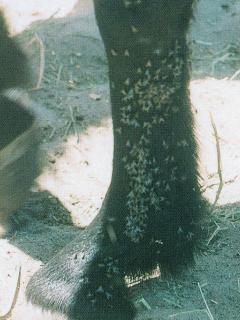On 2 September 2013, stable fly was gazetted as a declared pest under the Biosecurity and Agriculture Management Act 2007 (BAM Act) for the following 14 designated local government areas:
- City of Armadale
- City of Cockburn
- City of Joondalup
- City of Kwinana
- City of Rockingham
- City of Swan
- City of Wanneroo
- Shire of Capel
- Shire of Chittering
- Shire of Gingin
- Shire of Harvey
- City of Kalamunda
- Shire of Serpentine–Jarrahdale
- and the portion of the Shire of Murray described as the Peel-Harvey Coastal Plain Catchment - State Planning Policy No. 2.1
The Biosecurity and Agriculture Management (Stable Fly) Management Plan 2019 outlines the required control measures for stable fly management in the above areas. Refer to the stable fly management FAQs on this page for more information on these control measures. A Vietnamese version is also available.
Where stable fly is a declared pest, Local Government Authority (LGA) officers can apply to be authorised under the BAM Act to undertake compliance activities.
Please contact your LGA to enquire if compliance activities are being undertaken in your area and if stable flies are a problem for you. You can also make a report of stable flies to the Stable Fly Action Group (stableflyactiongroup.org.au).
Impact on livestock
Stable fly is closely associated with human activity and can be a serious pest of livestock around animal enclosures, stables, feedlots and paddocks or pastures.
It is sometimes known as biting fly and is a problem for cattle, horses, goats, dogs and humans because of its painful bite as it draws blood during feeding.
Cattle and horses are most affected. Animals will try to avoid the fly by stamping their feet, tail switching, throwing their heads down toward their front legs, and kicking sand up onto their legs and body.
Horses are seen to stamp when stable flies bite their legs.
This can lead to reduced weight gain from continual movement and allergic reactions on their skin from the flies' feeding. When stable flies are present in large numbers (more than 20-30 per animal), cattle will often bunch together in an effort to get to the centre of the group and avoid the fly, or they may stand in open water to avoid being bitten.
This continual agitation reduces the animal’s normal grazing time and they may move to feeding at night when the fly is not active. Bunching together by cattle is particularly hazardous in summer where animals can be at risk of heat stroke.
Stable fly numbers can be monitored by counting the flies on all four legs of about 10 animals. When the average number is more than 25 flies per animal (treatment threshold), action is needed. At more than 25 flies per animal, measurable reductions in weight gain and condition occur and numbers above 50 flies per animal can reduce weight gain by 25% and milk production by 40–60%.






